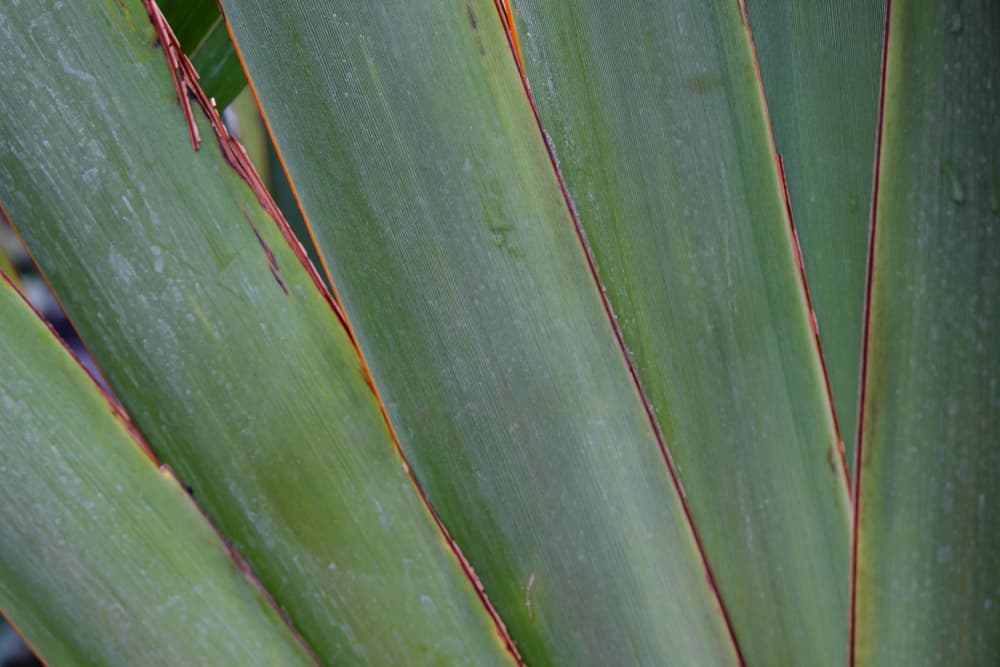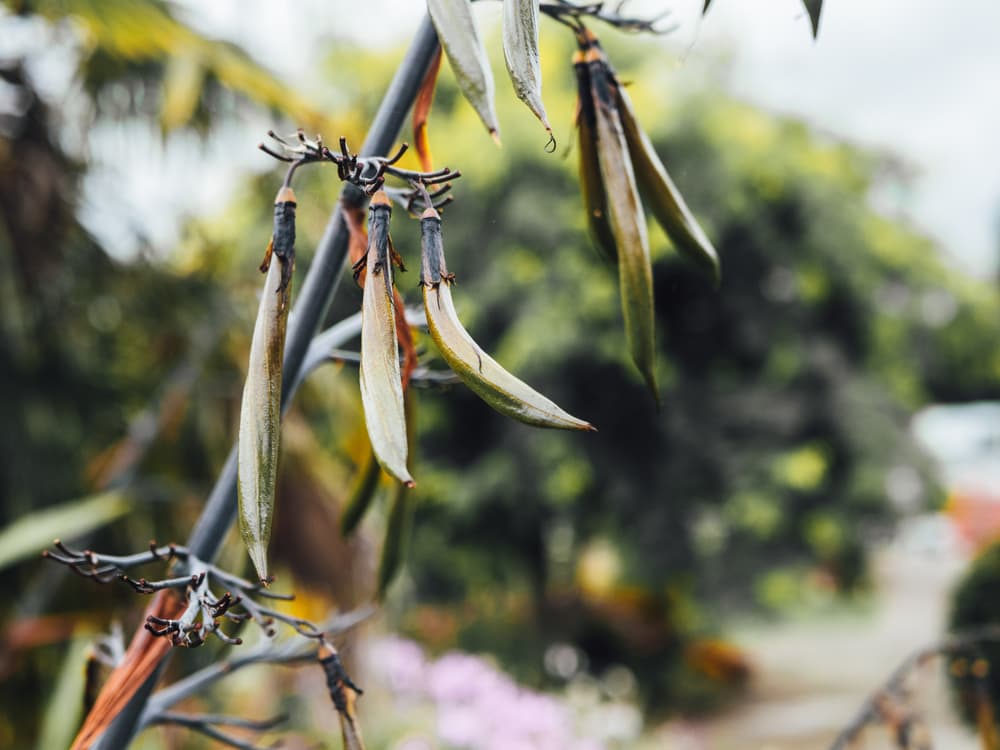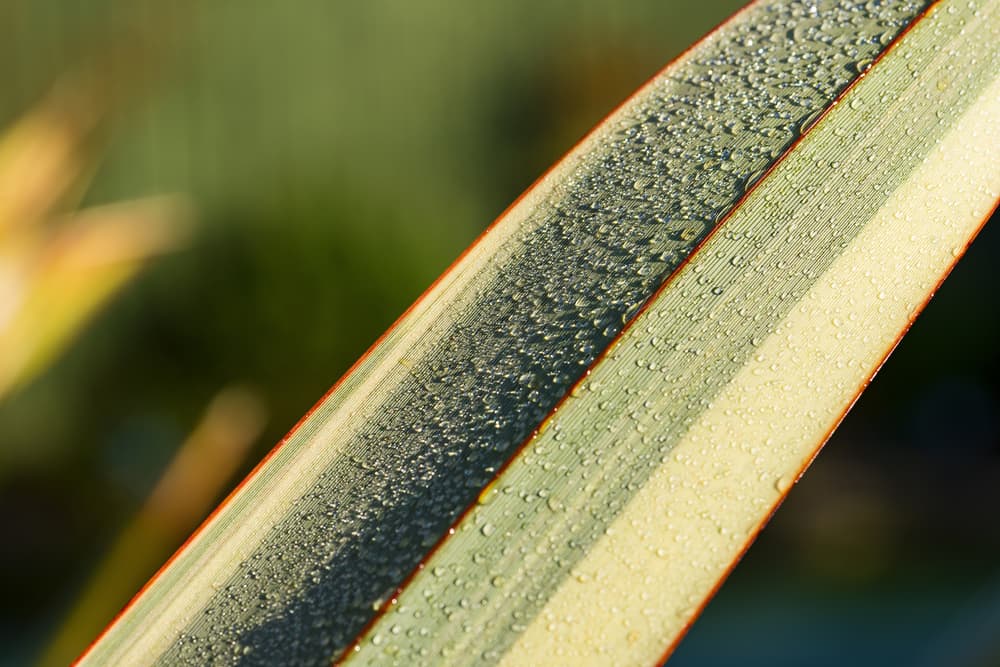Growing New Zealand Flax: ‘Just Remember To Give It Space To Do Its Thing’

PERENNIALS > PHORMIUM

Elizabeth is a Permaculture Garden Designer, Sustainability Consultant and Professional Writer, working as an advocate for positive change. She graduated from the University of St. Andrews with an MA in English and Philosophy and obtained a Diploma in Applied Permaculture Design from the Permaculture Association.
Reviewed By COLIN SKELLY

Colin is a Horticulturist and Horticultural Consultant with experience in a range of practical and managerial roles across heritage, commercial and public horticulture. He holds the Royal Horticultural Society’s Master of Horticulture award and has a particular interest in horticultural ecology and naturalistic planting for habitat and climate resilience.
Contributions From JACQUIE FELIX-MITCHELL

Jacquie Felix-Mitchell is a Garden Designer who runs her own business, Oasis Garden Design. She trained at RHS Rosemoor for a Certificate in Practical Horticulture and has hosted speaking events at the Chelsea Flower Show. She is also a member of The Chartered Institute of Horticulture.
IN THIS GUIDE
PHORMIUM GUIDES
Phormiums are two species of herbaceous perennial, grass-like plant, which can really make a dramatic statement in any garden.
Though usually used solely as an ornamental plant in the UK, in other areas their long leaf fibres have been used as an economic fibre.
In their native range in New Zealand they are known as ‘New Zealand Flax’, and the plants were widely used for textiles by Maori people and by early settlers.1Hindmarsh, G. (1999, April). Flax – the enduring fibre. New Zealand Geographic. Retrieved March 22, 2023, from https://www.nzgeo.com/stories/flax-the-enduring-fibre/
Phormiums are Phormium tenax and Phormium colensoi; to the Maori people, these are called, respectively, ‘harakeke’ and ‘wharariki’.2Harakeke/flax. (n.d.). Department of Conservation. Retrieved March 22, 2023, from https://www.doc.govt.nz/nature/native-plants/harakeke-flax/
“Phormium tenax is one of my favourite plants that can make a real statement in the garden,” shares Designer Jacquie Felix-Mitchell.
“Just remember to give it space to grow and do its thing.”
Overview
| Botanical Name | Phormium |
| Common Name(s) | New Zealand Flax, Harakeke, Wharariki |
| Plant Type | Perennial |
| Native Area | New Zealand |
| Hardiness Rating | H4 |
| Foliage | Evergreen |
| Flowers | Inconspicuous tubular flowers |
| Plant Out | March, April, May |
| Flowering Months | July, August |
Sunlight
Preferred
Full Sun or Partial Shade
Exposure
Exposed or Sheltered
Size
Height
1 – 2M
Spread
1 – 1.5M
Bloom Time
July / August
Soil
Preferred
Chalk, loam, sand
Moisture
Moist but well drained
pH
Any
Though called ‘flax’, they are not closely connected to Linum usitatissimum, the plant known as ‘flax’ in the Northern Hemisphere.
Both of these Phormium species, and the cultivars derived from them, are now widely grown as garden plants in many of the world’s temperate regions.
And to a lesser extent, they are also still used for fibre production.
Why Grow Phormiums?
Phormiums are prized as ornamentals for garden use.
These are large and dramatic structural plants which are valued for their striking long and pointed leaves, and the tall flower stems with yellow/green or muted red flowers born on mature plants in summer.

The sharp leaves bend down to create domes of arching foliage.
These leaves are often striped or tinged with shades of cream, yellow, red or pink along their margins.
Phormiums are drought tolerant once established, and make for a good choice for coastal gardens.
They have no appeal for deer and rabbits, so can be used in gardens where these grazers are a problem.
“The exotic feel of Phormium in a British garden can also extend to the wildlife visiting them,” says Master Horticulturist Colin Skelly.
“Starlings and sparrows are partial to the pollen of the flowers and can cause a second glance because it leaves orange stains on the head of the feeding bird, making it look like you’ve encountered a new bird species!”
Phormium Varieties

There are a lot of cultivars derived from P. tenax and P. colensoi.
The RHS has given an Award of Garden Merit to:
- P. tenax ‘Variegatum’ – green leaves striped with cream near the edges, reddish flowers.
- P. tenax ‘Purpureum’ – green/dull copperish/purplish leaves, reddish flowers.
- P. ‘Duet’ – green leaves variegated with cream towards the edges.
- P. ‘Sundowner’ – rusty green leaves with reddish pink edges.
- P. ‘Yellow Wave’ – leaves feature bright yellow stripes.
- Phormium colensoi subsp. hookeri ‘Cream Delight’ – leaves mostly cream with green edges.
- P. ‘Tricolor’ – yellow/green striped leaves, edged with reddish pink.
As well as looking at the leaf colours and forms for the plants, it is also important, when choosing a Phormium, to think about size.
The P. tenax and ‘Sundowner’ for example are taller specimens, which can reach over 2m in height.

While others are much more compact and diminutive, some just over 1m or a little more in height.
Hardiness
Bear in mind that some Phormiums are hardier than others.
Some are borderline hardy, and will suffer damage in winter where temperatures fall below -5°C.
Others, such as ‘Purpureum’ can cope with -10°C or even lower temperatures than that.
How To Grow Phormium
Division, carried out in spring, is not just for the purpose of reducing overcrowding, It is also the easiest way to obtain new Phormium plants.
Leaf fans, complete with roots, can be potted up and grown on.

Larger divisions can simply be placed right away into a different part of the garden.
From Seed
Growing phormiums from seed is not for the novice – it poses something of a challenge.
However, if you would like to give it a try, you can collect ripe seed and sow it in a propagator, at 18°C in spring.
Be warned, however, the seed may grow into a plant that differs considerably from the parent plant.

And you will have to be patient, since germination of these seeds can take up to a year!
Most gardeners will simply purchase these interesting and exotic-looking plants, rather than going to the hassle of trying to propagate Phormiums themselves from seed.
Fortunately, once you have one healthy mature specimen, division provides an easy way to increase your plant stock.
Planting
When To Plant
Container-grown phormiums are available to purchase year-round.
However, the best time to plant these is in the spring, after risk of hard frosts has passed in your area.
When planted fairly early in the year, the plants will have time over the summer to become established before colder and wetter weather arrives in autumn and winter.

Be sure to plant the phormium to the same level in the soil or container that it was sat at in the pot in which it came.
Where To Plant
Phormiums need a location in full sun, sheltered from prevailing winds.
In colder parts of the UK they will need to be grown in a particularly sheltered spot – against a south-facing fence or wall, for example.
In some colder areas, they may still need some winter protection.
The soil or growing medium in which they are planted must be evenly moist yet free draining.

These plants will not well tolerate waterlogged conditions, and do not like spending the winter in wet conditions.
They are often ideal for a gravel garden, or for a large statement container.
Where planted in heavier or less ideal soils, the area should be improved with plenty of good quality organic matter prior to planting.
Phormium Care
Watering
Phormiums should be watered regularly over the summer during dry spells in their first year after planting.
However, once established, these plants can be pretty drought tolerant, and will need watering only during very hot weather, or longer dry spells.
Of course, plants in containers will need to be watered more regularly, and will be more prone to drought damage.
Feeding
When you are growing your Phormiums in the ground, it can be beneficial to add a multi-purpose organic fertiliser such as blood, fish and bone to the area after spring planting.

Plants struggling with establishment may benefit from a mulch of compost or well-rotted manure.
However, mature ground-growing Phormiums should not usually require feeding on an ongoing basis.
Phormiums in containers will thrive if provided with an organic liquid plant feed from late spring through to the middle of the summer.
Winter Care
As mentioned above, Phormiums growing in colder areas, and in particularly cold winters, may need some protection against the cold.
Mulching is not just for adding fertility – a thick dry mulch of straw or bark applied in winter can help protect the base of the plant.
This should be laid around 10cm thick in autumn, before the first frosts, then removed in spring.
In colder parts of the British Isles, it may also be necessary to wrap the top growth with fleece or scrap fabric if a hard frost is forecast.

By far the most common problem people will encounter when growing Phormiums in the UK is damage due to hard frosts in winter.
A plant can usually recover if only a few leaves have been damaged by winter cold.
But if the damage has been more severe, the plants may be slow to recover, or may not recover at all.
Keep the plant as healthy as possible and make sure it is in the best possible location to reduce the chances that something will go wrong.
Spring Tidy-Up
Phormiums do not need regular pruning, but older clumps will appreciate a spring tidy-up.

Simply remove any old, damaged leaves.
Pull or cut them off the plant as close to the base as you can; cut out old flower stems too – as low down as you can without doing any damage to surrounding foliage.
If the clumps have become too large, do not heavily prune – instead, you can consider lifting and dividing the mature plant.
References
- 1Hindmarsh, G. (1999, April). Flax – the enduring fibre. New Zealand Geographic. Retrieved March 22, 2023, from https://www.nzgeo.com/stories/flax-the-enduring-fibre/
- 2Harakeke/flax. (n.d.). Department of Conservation. Retrieved March 22, 2023, from https://www.doc.govt.nz/nature/native-plants/harakeke-flax/
